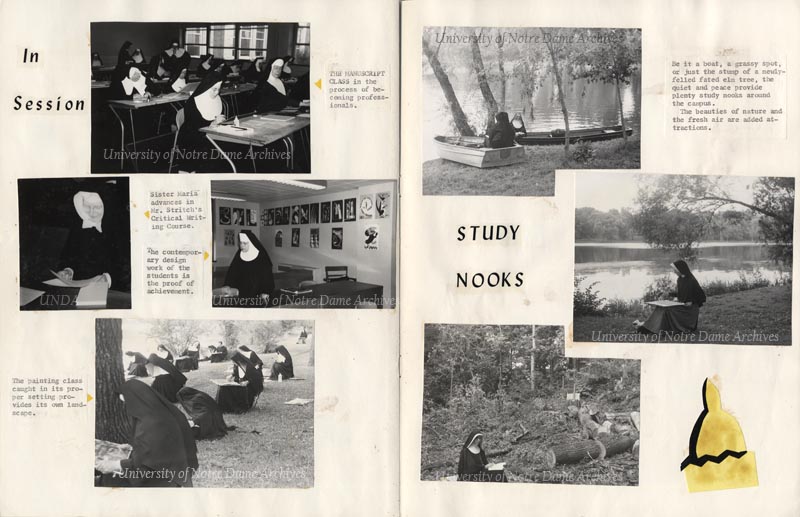
Notre Dame established a summer school program in 1918 “to help Religious teachers to make their work more interesting and more effective” [UPWC 41/44]. On a deeper level, the summer school program had a few other important side effects. The program was open to both men and women and offered undergraduate and graduate coursework. For decades, the majority of students were clergy from various congregations across the country: primarily sisters along with priests and brothers. These women were among Notre Dame’s first female students and alumnae. Many of the summer school students were high school teachers and would promote Notre Dame to their college-bound male students. Additionally, the Summer School program became a cornerstone in the foundation of the Graduate School.

From the beginning, coursework was available in most areas of study, including business, science, and liberal arts. Since most of the students were secondary educators, the summer school program also offered specialized courses such as education and library science that were not normally offered during the regular school year.

In 1960, “One out of sixty-five nuns in the United States is improving her skills as a teacher or administrator at the University of Notre Dame this summer” with a total of 1373 nuns enrolled. “The sisters, whose religious garb contrasts sharply with the Bermuda shorts and sports shirts of Notre Dame’s lay students, constitute the largest block of the 2877 summer school enrollment. The student body currently numbers 268 priests, 79 seminarians, 163 Brothers, 904 lay men, and 90 lay women.” Four-fifths of the summer session students were graduate students in 1960. [PNDP PR 60-55]

As time went on, demand for the summer school program declined. The program was “originally intended to provide an opportunity for religious teachers to finish their baccalaureates in order to meet certification requirements then being imposed by many states” [Schlereth, page 161]. Its function perhaps was not as needed in later years as the numbers of clergy, particularly sisters, declined and the numbers of people with college degrees increased. Summer sessions still exist today, but are primarily composed of regularly enrolled Notre Dame students.
For more information regarding the summer school sessions, the University Archives holds a number resources, including press releases, informational bulletins, course schedules, and newsletters.
Sources:
PNDP 30-Su-1
PNDP 40-Su-1
UPWC 41/44
Notre Dame Press Releases
The University of Notre Dame: A Portrait of Its History and Campus, by Thomas Schlereth
GTJS 5/09
GPHR 45/1274
GHJC 50/40

Yes, Summer School really was an important component to Notre Dame’s history. It is unfortunate that these women don’t always get acknowledgement for their accomplishments.
I believe the two really visionary aspects of the creation of the Summer School in 1918 are (1) its focus on graduate education and (2) its being co-educational from its inception, both of which would be key to Notre Dame becoming a world-class university.
Also, the nuns didn’t just go to class. See “Nuns’ Summer Theatre” in WASHINGTON HALL AT NOTRE DAME, 247-52, about the very active and creative summer theatre program in the 1950s which ultimately got them into TIME and LIFE, the original ‘sister act.’